Bedlam, pandemonium, mayhem. These are just a few different words of the many that can be used to describe the scenes at full-time at the Etihad Stadium on Sunday afternoon.
A ground riddled with anguish and disbelief, as Phillipe Coutinho tucked Aston Villa’s second past Ederson with just twenty minutes to go, uttered a gargantuan sigh of relief when Michael Oliver blew for full-time.
The sixth Premier League title had been secured by Man City, the fourth under Pep Guardiola’s seductive tenure. Emotions were running high. The grief of waving goodbye to the club captain Fernandinho was superseded by the joy of overcoming the colossal hill of being two down with twenty minutes to go to win the Premier League.
City were in dreamland, but it so nearly became a nightmare as Steven Gerrard was just a quarter of an hour away from helping Liverpool to their twentieth league title.
Villa were incredibly prepared from a tactical perspective for this final game and managed to hold off City’s barrage for the guts of 70 minutes. Nevertheless, so often a villain of his own genius, Guardiola made three breathtaking substitutions in the second half, turning the tie on its ugly head.
This article will be a tactical analysis of this title-clinching bout. It will be an analysis of how Gerrard’s tactics stifled City for so long before Guardiola’s substitutes reigned supreme.
Lineups and formations
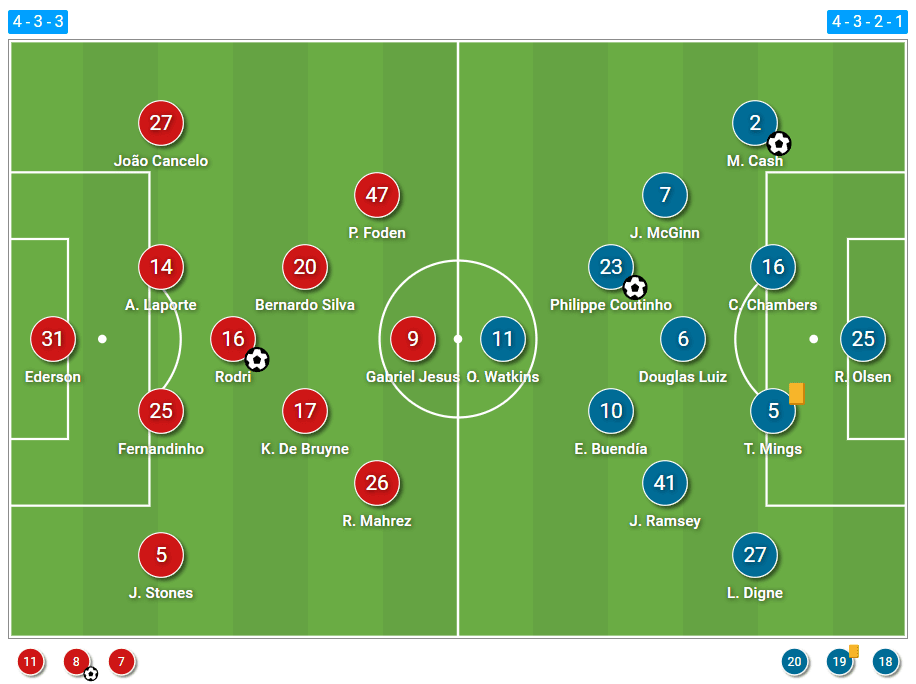
It certainly shouldn’t surprise anyone that City lined up in their conventional 4-3-3 shape, turning into more of a 2-3-5 in possession. The structure failed to find much joy against West Ham’s sturdy low block in the penultimate game of the season but has worked a treat throughout the campaign for the champions.
Guardiola made just two changes from the team that drew 2-2 at the London Stadium a week prior. John Stones came back into the lineup, being deployed as a right-back, with Joao Cancelo switching to his preferred left-back role.
The midfield remained exactly the same. However, Phil Foden came in for the £100 million Jack Grealish to complete the forward line.
Like his counterpart, Gerrard also made two changes to Aston Villa’s starting eleven from the side that struggled against the now-relegated Burnley at Turf Moor in midweek. Emiliano Martinez’s injury forced the ex-Liverpool captain to bring Robin Olsen into the team.
Meanwhile, sticking with his preferred 4-3-2-1 Christmas Tree formation, Phillipe Coutinho came back into the narrow forward line, with the 18-year-old Carney Chukwuemeka dropping to the bench.
Two strong lineups took to the field, full of quality, coached by two of the best midfielders in European history. Villa had very little on the line but had the chance to write history. The Villains were almost finished their draft before Guardiola ripped the pen from their conceited claws. First, though, let’s take a look at Villa’s defensive set-up.
Villa’s pragmatic game-plan
Rafael Benitez would be proud of his former protégé’s tactical set-up against City. Some teams like Liverpool can take the game to Guardiola’s, and press them high. However, for the most part, lesser teams won’t be able to match City for quality and so have to try and limit the space they have to play into.
Followers of Gerrard from his time with Rangers will know that the ex-England captain is no stranger to a deep defensive block. Against City, Villa employed the deepest block they could, looking to cut off the central spaces of the pitch and force the champions-elect wide.
Villa didn’t bother pressing high. This intention was very noticeable within the first fifteen minutes.
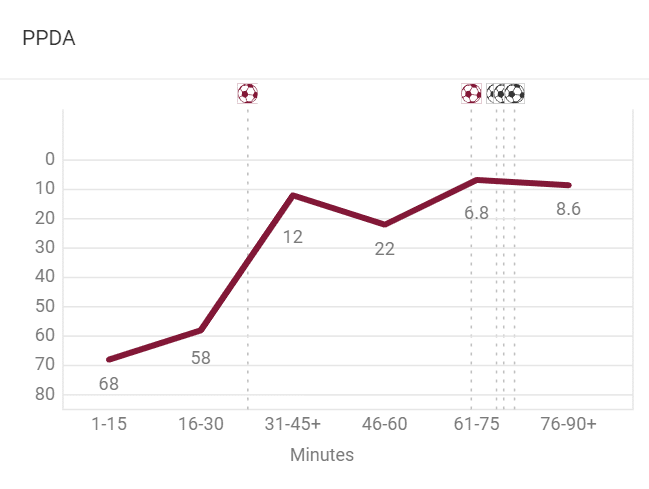
In the first quarter of an hour of the crucial clash, the Villains’ Passes allowed Per Defensive Action rate stood at 68, meaning Villa were allowing City to play 68 passes before actively seeking to regain possession.
Their approach became much more proactive as the game wore on but their overall PPDA in the first half remained at an extremely conservative 46. Villa’s 4-3-2-1 shape with narrow wingers naturally makes the middle corridors compact and difficult to play through once the midfield and forward line are working in unison to cut off passing lanes inside the defensive block.
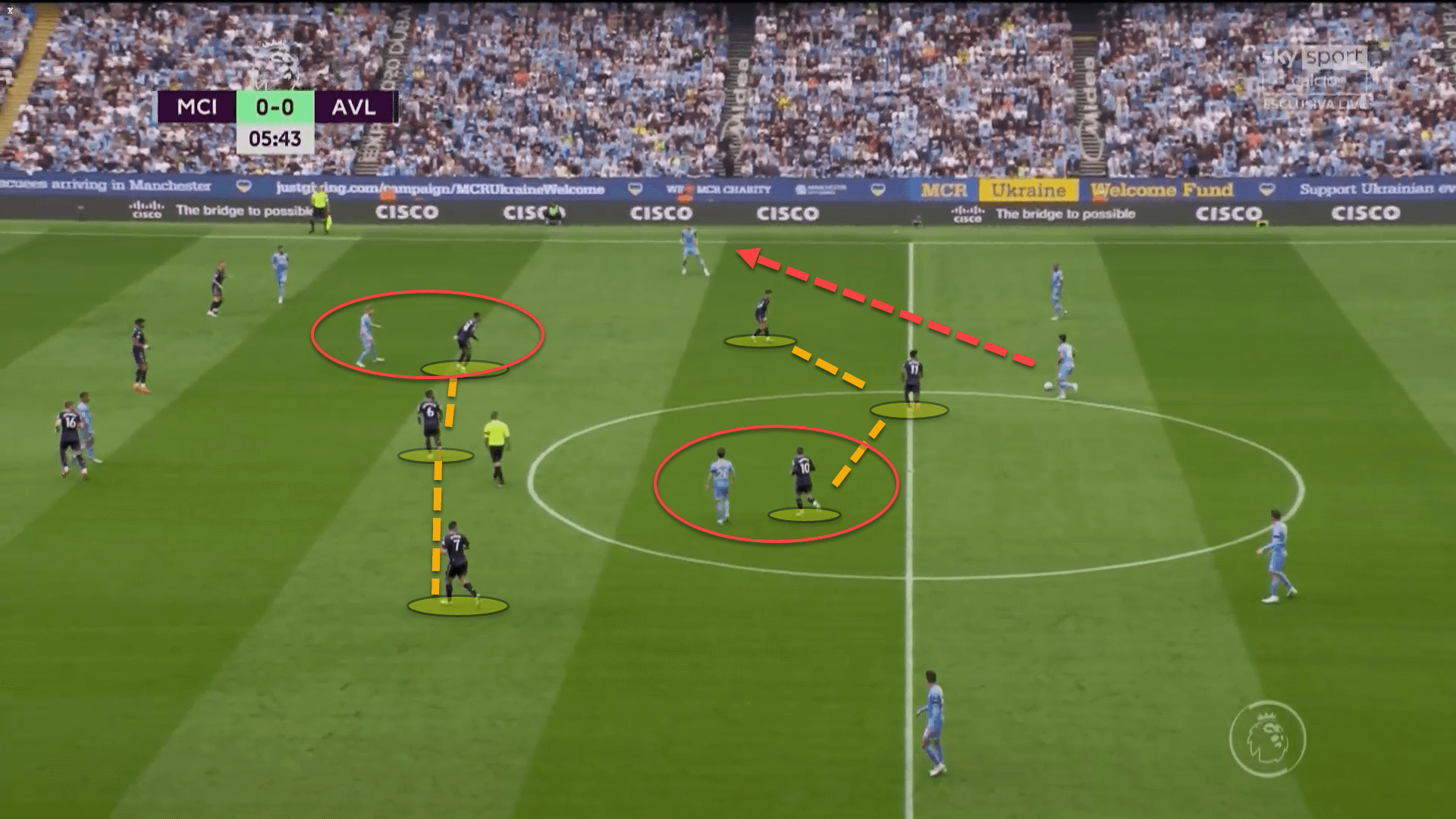
The lines were really compact horizontally and vertically, meaning City were forced to play to the wide areas for the most part as the narrowness of the 4-3-2-1 gives the opposition space to receive the ball in these areas relatively unscathed.
The odd time that City did manage to turn on the ball inside of Villa’s compact and passive zonal block, the visitors would bunch together to close off any access for through balls in behind, while enticing the hosts to play wide once more.
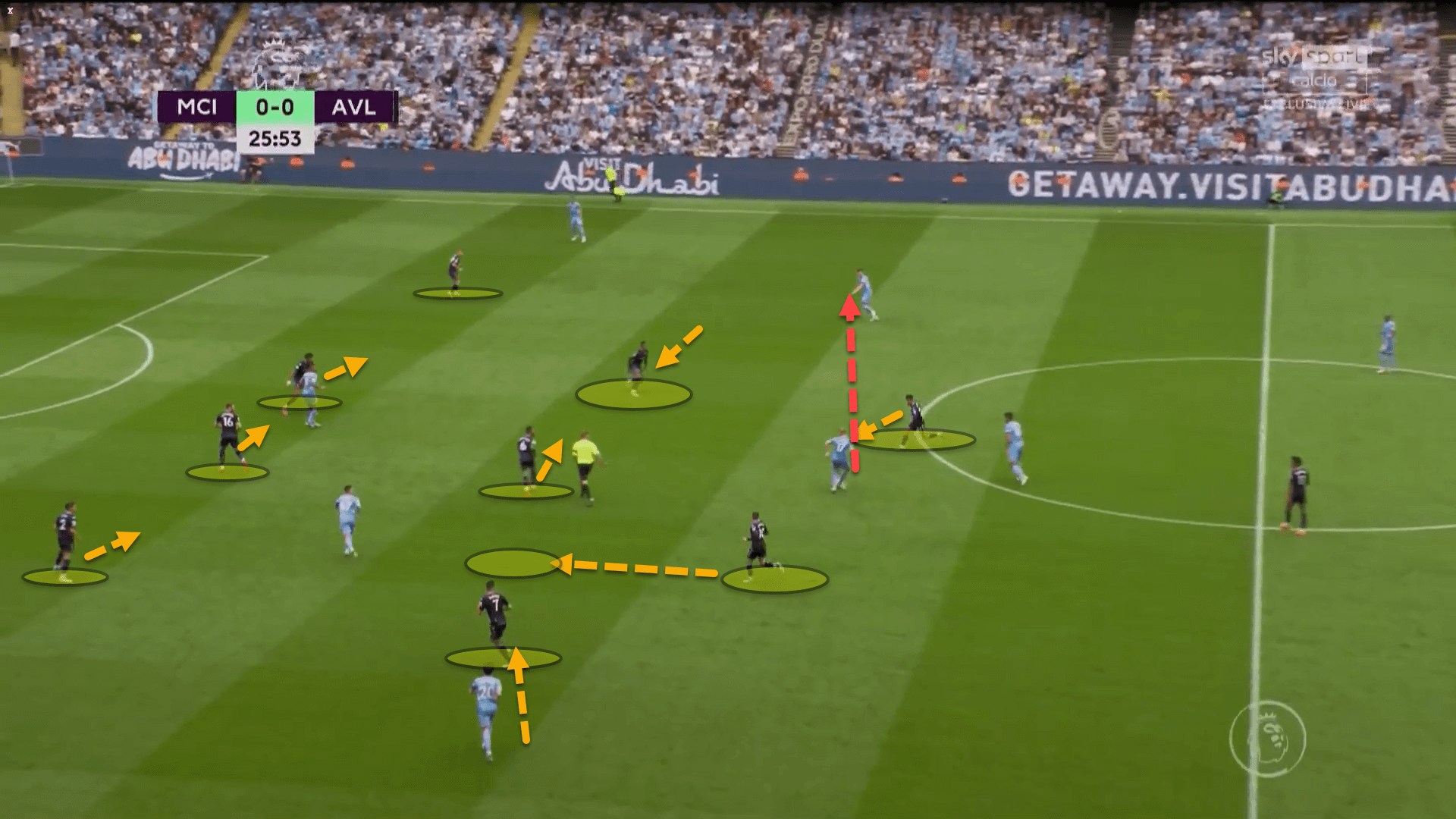
Their principles were basic, yet effective: deny central access, force wide, and then look to regain possession in these deeper areas of the pitch before transitioning.
There was nothing innovative about Villa’s approach against City, but these wide traps were very efficacious. The Brummie club had quite a high volume of defensive duels in these deeper areas on the flanks, especially down their right side with Matty Cash, John McGinn and Emi Buendia.
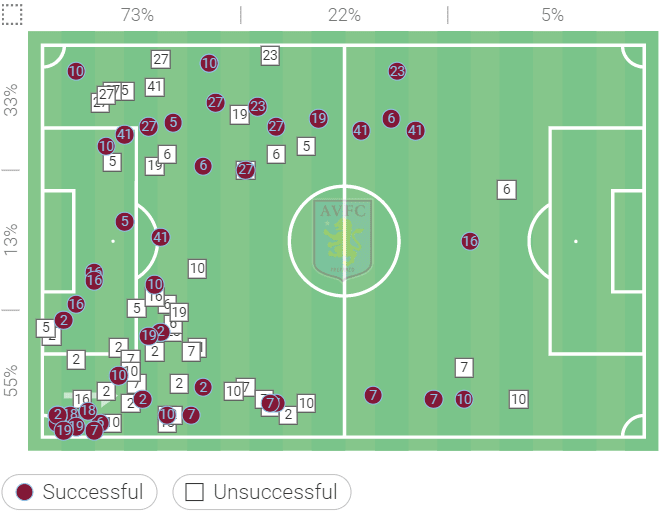
When Guardiola’s men moved the ball out to the wide spaces, Villa’s entire defensive block would shift across to ensure that City were unable to create successful wide overloads.
They would then use the touchline as an extra defender, limiting the space their opponents had to play into. From there, Gerrard’s side pressed aggressively to try and win back possession, or else force them to play back to the central defenders and restart again.
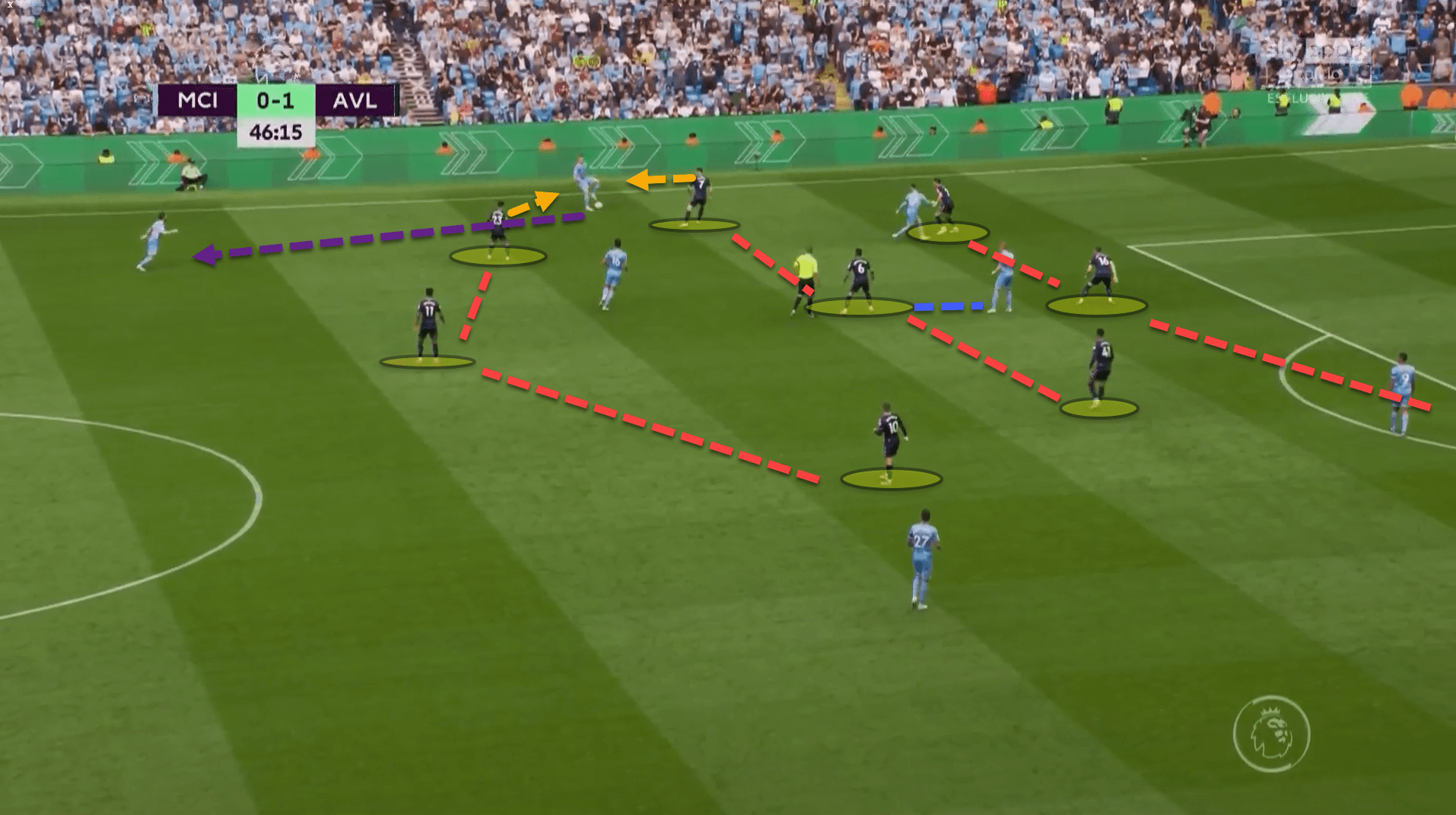
City have incredibly talented players in their ranks. Limiting their time, space and vision is by far the best method a team can use to nullify them as much as they can, and Villa did this expertly throughout the first 75 minutes of the game.
Doing so is much easier said than done, of course. This is undoubtedly one of the greatest teams in English history but Villa’s defensive gameplan worked really well before City shattered their chains late on in the game.
Villa’s long balls
Attacking-wise, Gerrard’s masterplan was tactically astute too. Once again, keeping up with the theme of simplicity, Villa would simply look to get the ball forward to Ollie Watkins by using direct passes to the number ‘9’.
The Birmingham-based club attempted 222 passes in total throughout the entire match on Sunday afternoon, 48 of those were long balls which works out at around 21.07 percent of their total passes. Villa’s average share of long passes this season has been 11.74 so this was almost double their regular numbers.
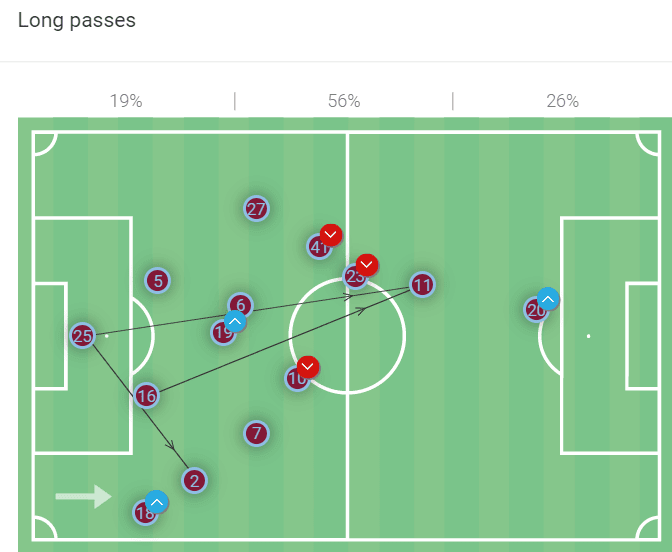
Here is a passing map that displays Aston Villa’s most utilised long ball links. Switching the play from Olsen in goal to Cash at right-back was a constant for Villa while going long towards Watkins from the keeper as well as Calum Chambers was also a very persistent route of ball progression.
But why did Villa want to play long against Manchester City? This season, City’s high pressing has led to six goals in total in the Premier League, which is the joint-second most in the division.
Renowned for their beautifully expansive positional play, City are just as efficient in the defensive phases. Trying to play through the Sky Blues’ press probably wasn’t going to work out wonderfully and so Gerrard decided to instruct his team to play over it.
West Ham United showed the rest of the league the blueprint for doing so the week prior in that 2-2 draw in London.
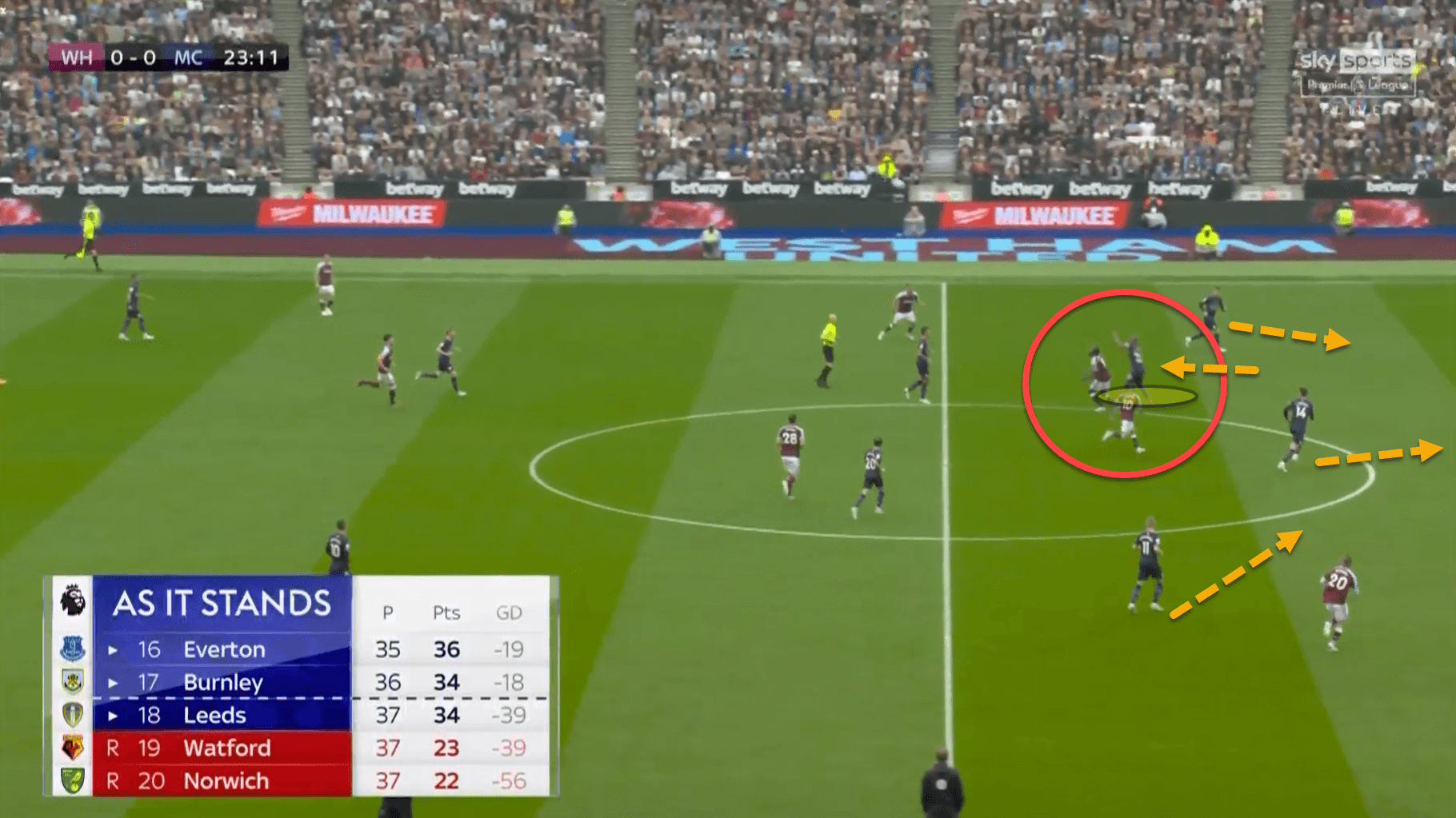
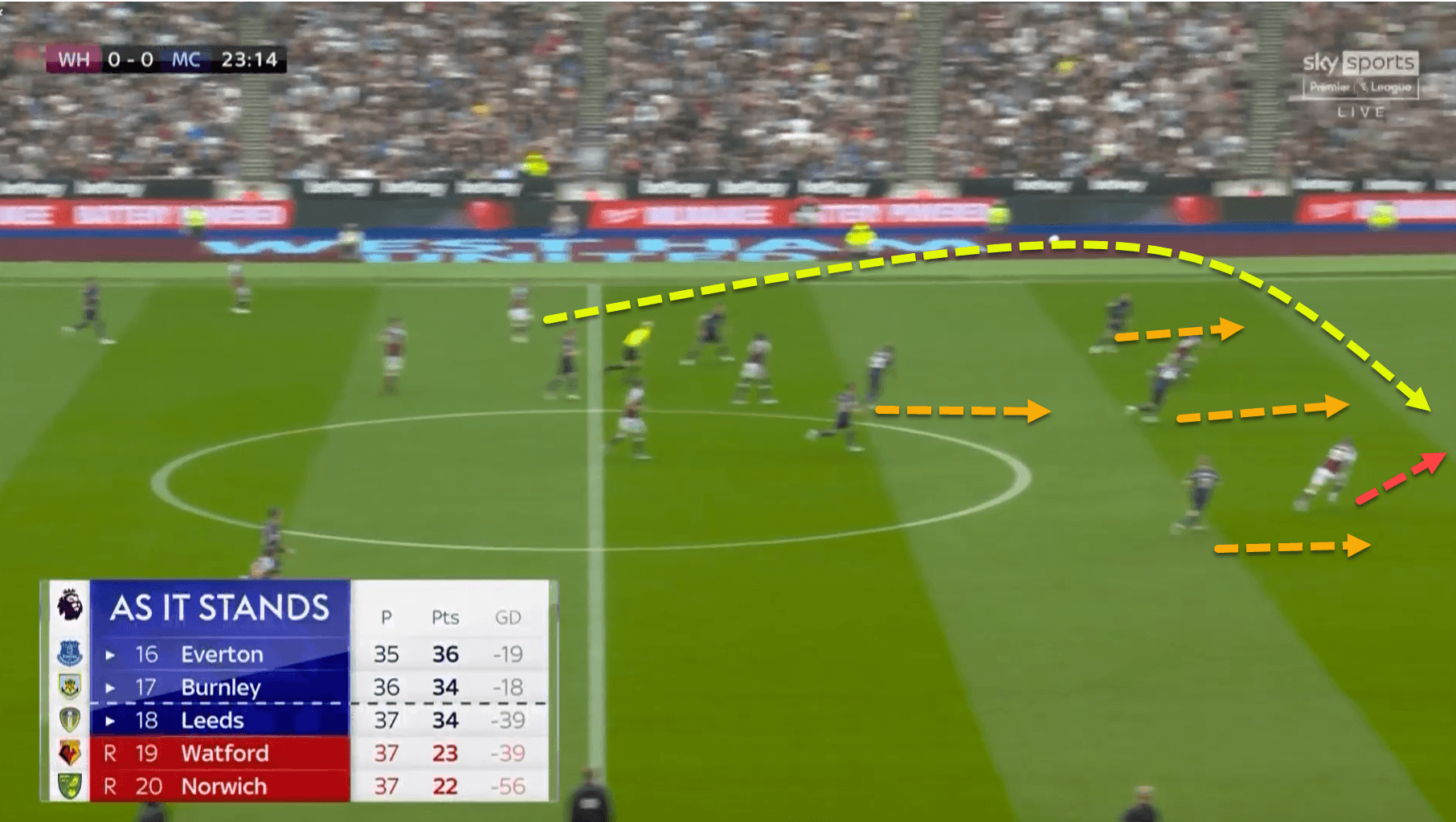
At 5’10, Fernandinho is an easy target from long balls for physical strikers to contest with in the air, much more so than Aymeric Laporte.
It was pretty obvious within the first half that Watkins was repositioning himself over towards City’s club captain every time Villa were looking to play to his head. Ever since the injury of Ruben Dias, aerials balls have been an area of weakness for City. When one defender steps out to challenge, the rest do not drop quickly enough to cover the space behind them.
This cost the team two goals against the Hammers, and almost caused them to throw away the title when Coutinho bagged Villa’s second from this exact type of situation.
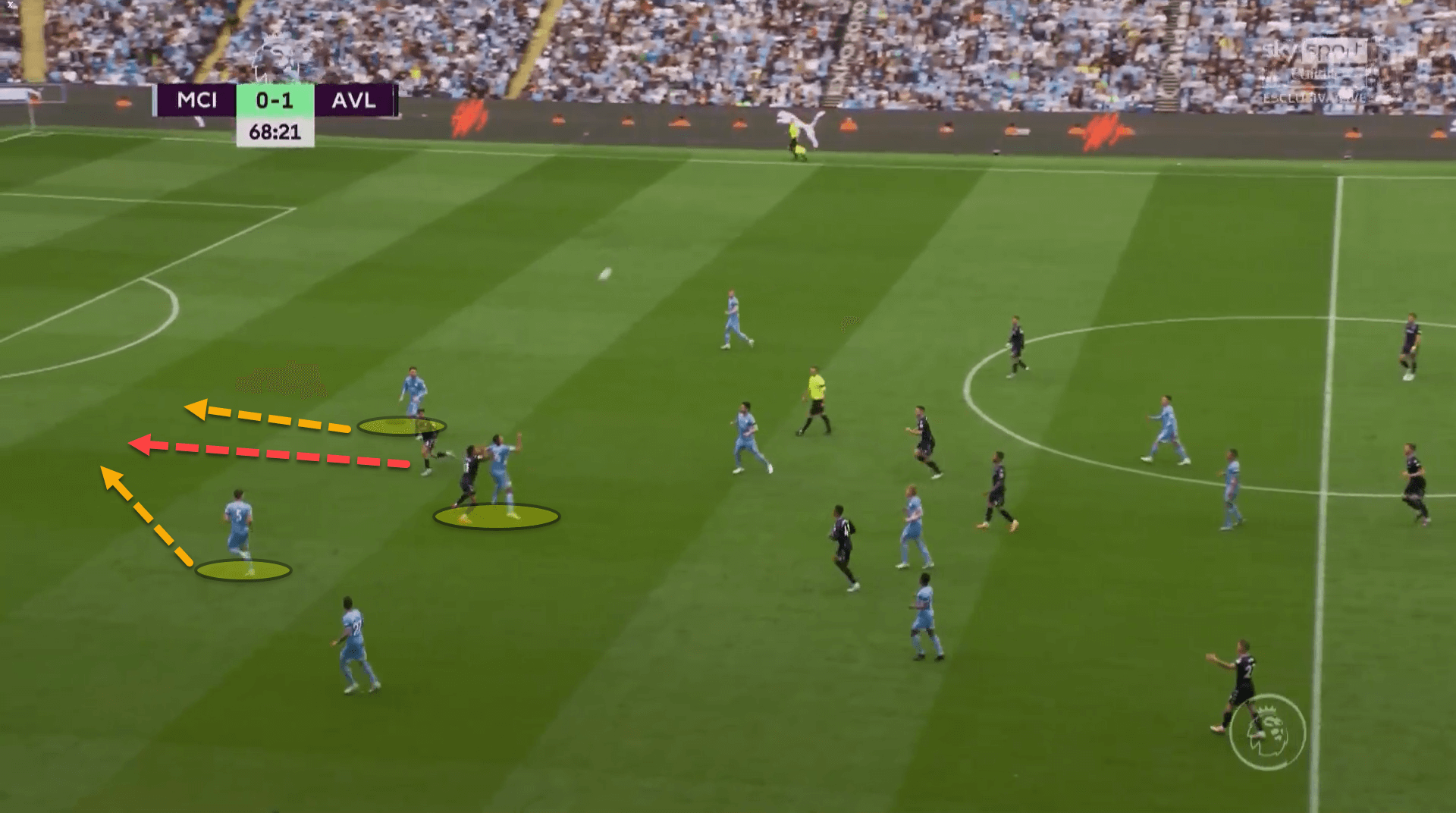
By the time Coutinho superbly tucked away his shot past Ederson, striking fear into every City fan at the ground, Fernandinho was no longer on the pitch after having quite a difficult time up against Watkins. Guardiola had brought Oleksandr Zinchenko on at left-back, taking the Brazilian off, putting Cancelo to his natural side while pushing Stones back into the middle.
However, when Watkins contested the aerial ball from the goalkeeper with Rodri, neither Stones nor Laporte dropped to anticipate the flick-on into Coutinho. Regardless, the tricky winger did and rightfully punished City’s centre-backs for their schoolboy defending.
Liverpool looked to have one hand already on the trophy as Anfield erupted into a boisterous cheer of encouragement. Gerrard may have finally won the Premier League for his boyhood club.
Enter Gündoğan
Bernardo Silva did not have a poor game. The Portuguese playmaker was limited with the space he had to roam around in, but he certainly tried to make things happen throughout his time on the field.
Since Villa sat in a deep 4-3-2-1, leaving space on the flanks, Silva would regularly drop out to the left of the centre-backs to try and instigate wide overloads.
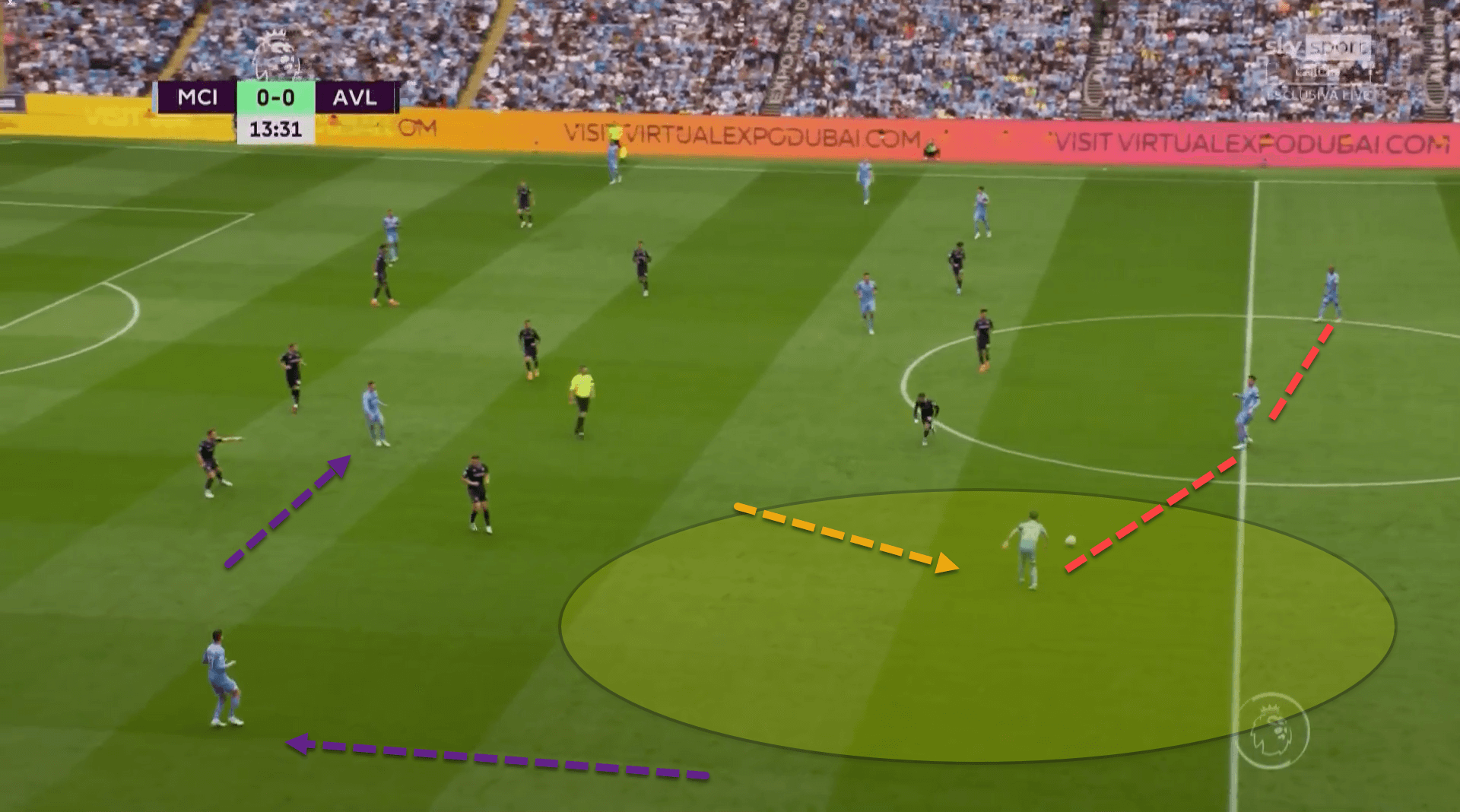
This movement was triggered when Cancelo would vacate the space next to Laporte, with Foden pushing inside into the halfspace between Cash and Chambers.
Wide overloads were a persistent method used by Guardiola’s men to try and break down Villa’s stubborn structure. This is evident from the direction of City’s positional attacks from the game. From a total of 57 positional attacks, 41 were down the flanks.
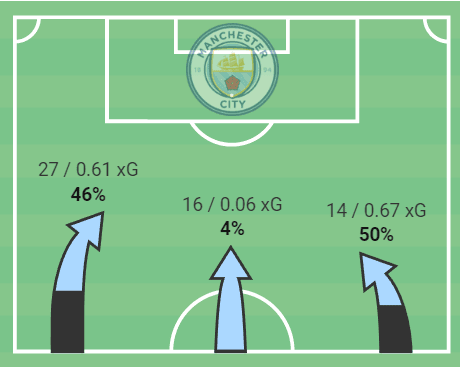
City especially focused their attacks down this left side with Foden, Cancelo, Silva, Laporte, and often even Kevin de Bruyne would shift across to help create extra numbers. But Villa would not budge.
Gerrard’s team remained utterly resilient, like a brick wall refusing to crack. Unfortunately, though, all brick walls are permeable. Eventually, City rained down enough on the mid-table side that cracks began to show.
Merely seconds before Coutinho’s second goal of the game, Guardiola took Silva off and replaced him with İlkay Gündoğan. Pep needed a midfielder who would be more active in the box as opposed to Silva who played quite deep. This was to be arguably the most pivotal moment in the title race. Raheem Sterling also came on for City as Guardiola needed a more direct dribbler than Riyad Mahrez on the right. Within minutes of being on the field together, the pair combined to score the first of a flurry of fantastic finishes to round off an incredible finale.
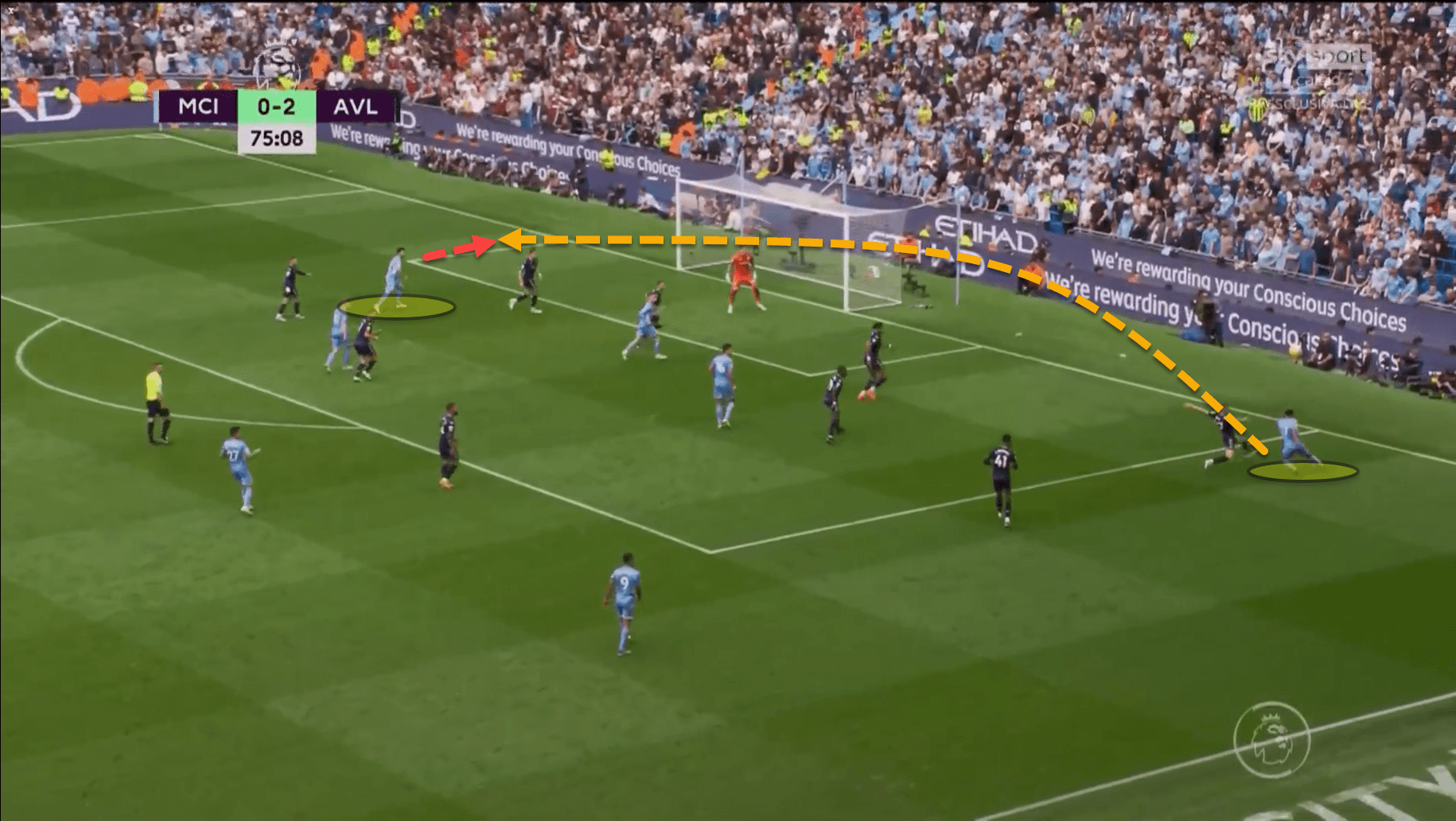
Gündoğan was Man City’s top goalscorer last season, bagging 17 goals across all competitions. His twenty-minute cameo against Villa proved why in the most tremendous of fashions.
The former Borussia Dortmund midfielder’s movement inside the penalty area was truly wonderful, something City had been missing throughout the game, and it came to be of the utmost importance once again just minutes after he headed his first home.
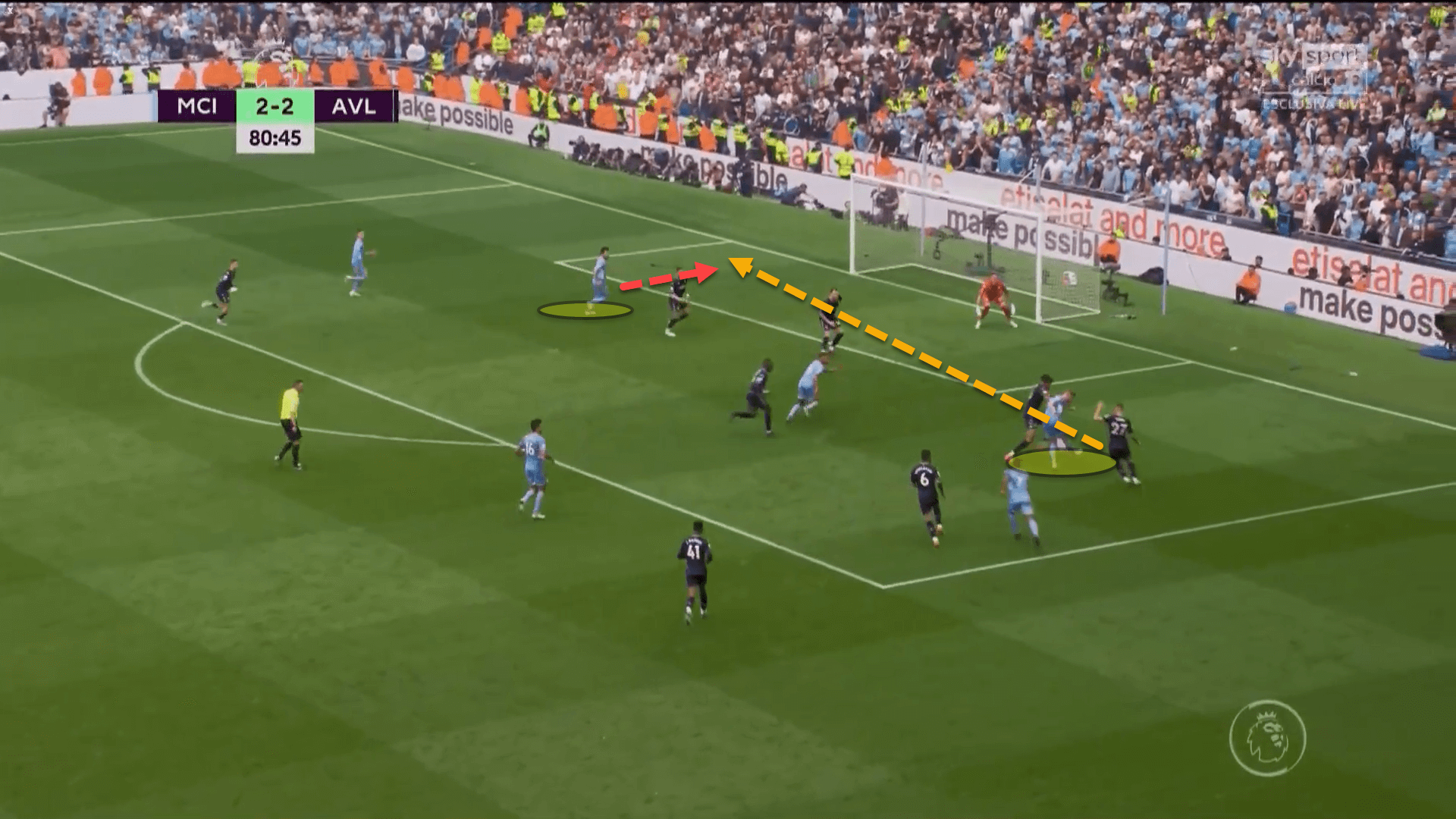
Once more, his movement was top class, delaying his run on the blindside of Villa’s last defender. Partnered with Kevin de Bruyne’s pitch-perfect pass to the back-stick, Gündoğan poked home the winner.
The Etihad rumbled as the ball struck the back of the net. It wasn’t quite as memorable as Sergio Aguero’s last-ditch title clincher back in 2012 to wrap up City’s first-ever league triumph but it will certainly stick in the mind of the supporters for years to come.
Conclusion
So often lamented as an overthinker, Guardiola’s thought process reigned supreme when it mattered most. The Catalan coach is now one of just five managers in football history to lift ten league titles or more, alongside titans of the industry like Sir Alex Ferguson and Giovanni Trapattoni.
Gerrard will be gutted to have lost the game in the manner that he did, but his Villa were superb for the majority of the game. The future looks bright for the Villains under the young coach.
The fixture was an instant Premier League classic. The stature of the game, combined with the drama of it all reminded us why we all love football.





Comments